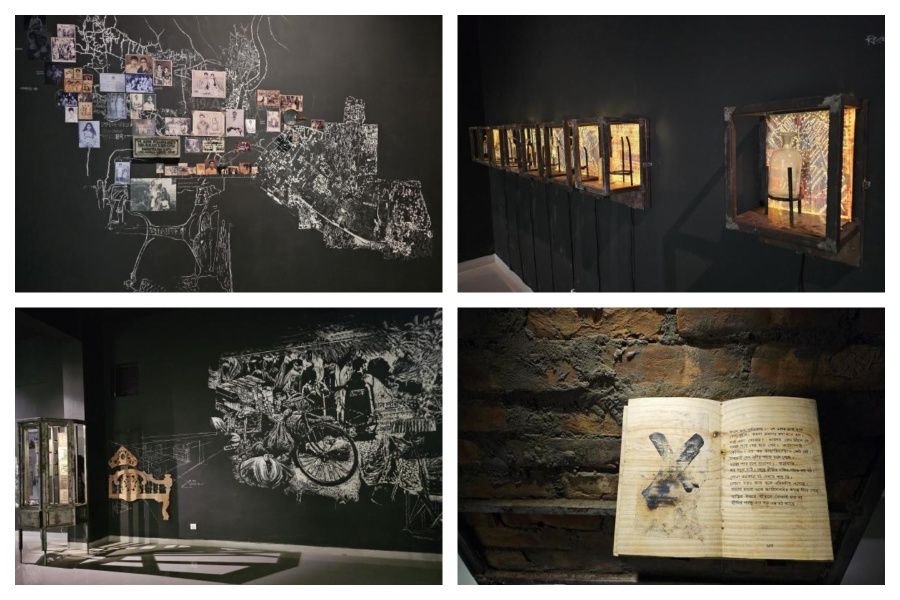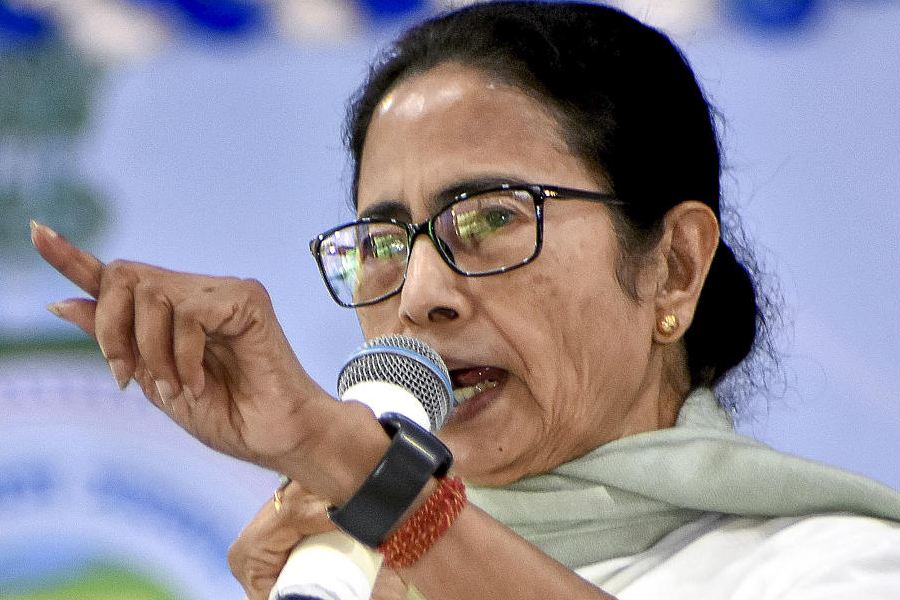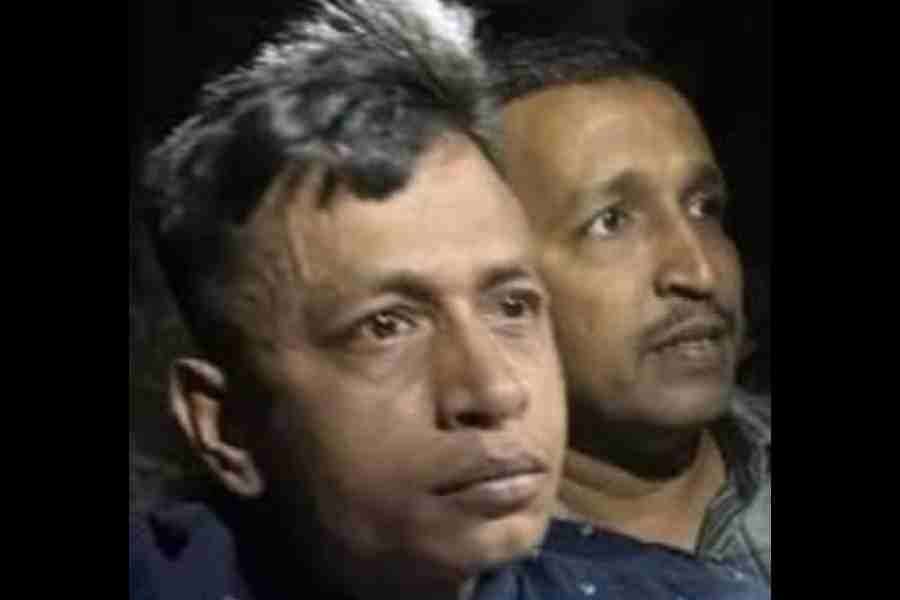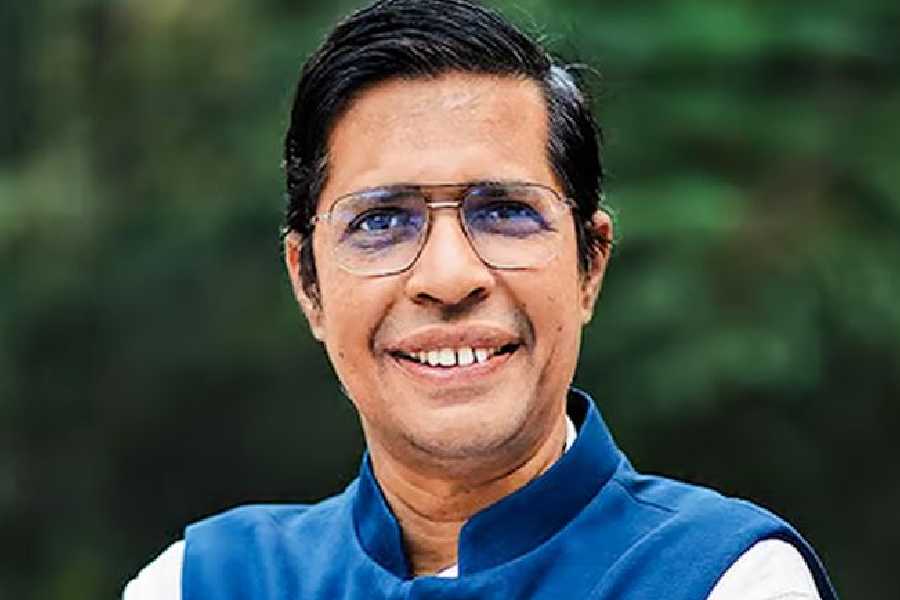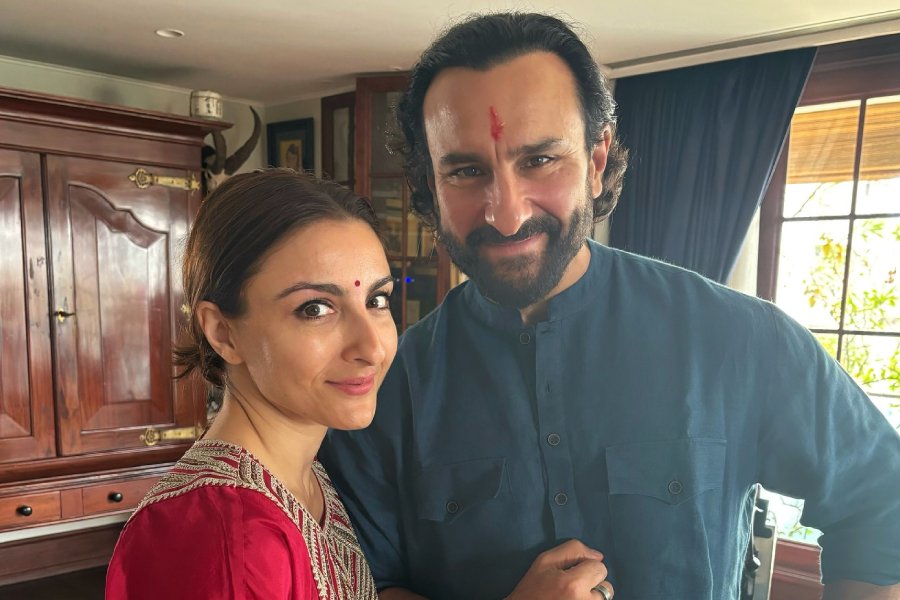In the shadows of a semi-lit room on the first floor of Arts Acre are snatches of a saga of displacement told through objects, voices and family photographs.
Hridaypur (Heartland) is one of the exhibitions at the Action Area III venue, taking place till January 5 as part of the ongoing inaugural Bengal Biennale. But it is much more than an exhibition. It is a collective memory that resists erasure of the people of East Bengal who were uprooted during the Partition and settled on Indian soil as refugees. The exhibition is based on the research done by artist Pradip Das and his team in Naktala, now a bustling south Calcutta locality but once a fringe area, which a bunch of uprooted people had made their new home.
It is also the offshoot of the 2023 Durga puja pandal that Das had conceived and executed for the local puja, Naktala Udayan Sangha, and most of the objects exhibited were collected from families in the neighbourhood whose individual stories the puja told within the fold of the area’s genesis. “Hridaypur was the third of a series I was presenting at the puja over three autumns since 2021. In 2021, the theme was displacement from east Bengal. The theme for 2022 was settling down on Calcutta’s fringe and last year, it was a lookback,” said Das.
Das, a prominent member of the artist commune Chander Haat, said he had been working on the theme of Partition since 2016. “I was visiting Barishal in Bangladesh, in search of my own roots. Though our house was burnt down during the war of 1971, the trip evoked my interest in the topic,” he said. Since then, he made several trips to Bangladesh, collecting the water of several rivers, taking pictures and recording oral history.
When the offer came in 2021 to execute the Puja pandal of a refugee colony like Naktala, Das decided to use his research and focus on the personal histories of the local people who had left their birthplaces behind mostly around the time of Partition and came here to start afresh,” he said. The fact that the area’s postal index code was 47, coinciding with the year of Partition 1947, added to the symbolism.
Water of the rivers from across the border, preserved in glass bottles, has been tastefully illuminated, like they were at the pandal, and are hanging from the wall in a row. Their names, Dhansiri, Sheetlokshya, Amua, Kalijira…, are etched on the wall, as if in chalk on a black background.
A section of the wall, Das says, was painted black and he got to work on it with a scrapper. “The engravings stand for memories that have scarred the mind,” he said. In one such artwork, there is a satellite map of Naktala, next to which is engraved a partial map of Bangladesh. On it are pasted black and white family photographs of various sizes, the pin code of Naktala in Bengali, a woodcarved replication of the nameplate of an actual Naktala house, a certificate of someone’s intermediate examination... All of it stands on the back of a sewing machine engraved underneath.
An actual sewing machine, much-used and rusting, is placed on a stand next to a piece of wood, resembling a shoulder bone. “Sewing was the sole livelihood of many refugee families then. The scapula is almost like an extension of their existence as they used the machine for long hours in search of their next meal,” Das explained.
Behind the rack is a section of a wall, that stands both for the Partition and of a home. A wooden book, is kept in front of it, open at a page. On the verso is a bold cross sign, which in the artist’s mind is the mark drawn at the back of a train, signifying the end of a journey. On the recto are lines from Atin Bandyopadhyay’s Neelkantha Pakhir Khoje, which deals with the Partition.
The far walls have two large engravings, both of displacement — one on foot and another on a van rickshaw.
As one watches the exhibits, the eye getting adjusted to the dim light, the ear registers a voice from the far corner where several small tables stand. On the side of each hangs a headphone. The sound comes from one of them. It is an invitation to put each on and listen.
Suddenly the voices of the so-far nameless, soundless people, who are at the core of the exhibition, come alive, telling the stories of their lives left behind across the barbed wire fence.

